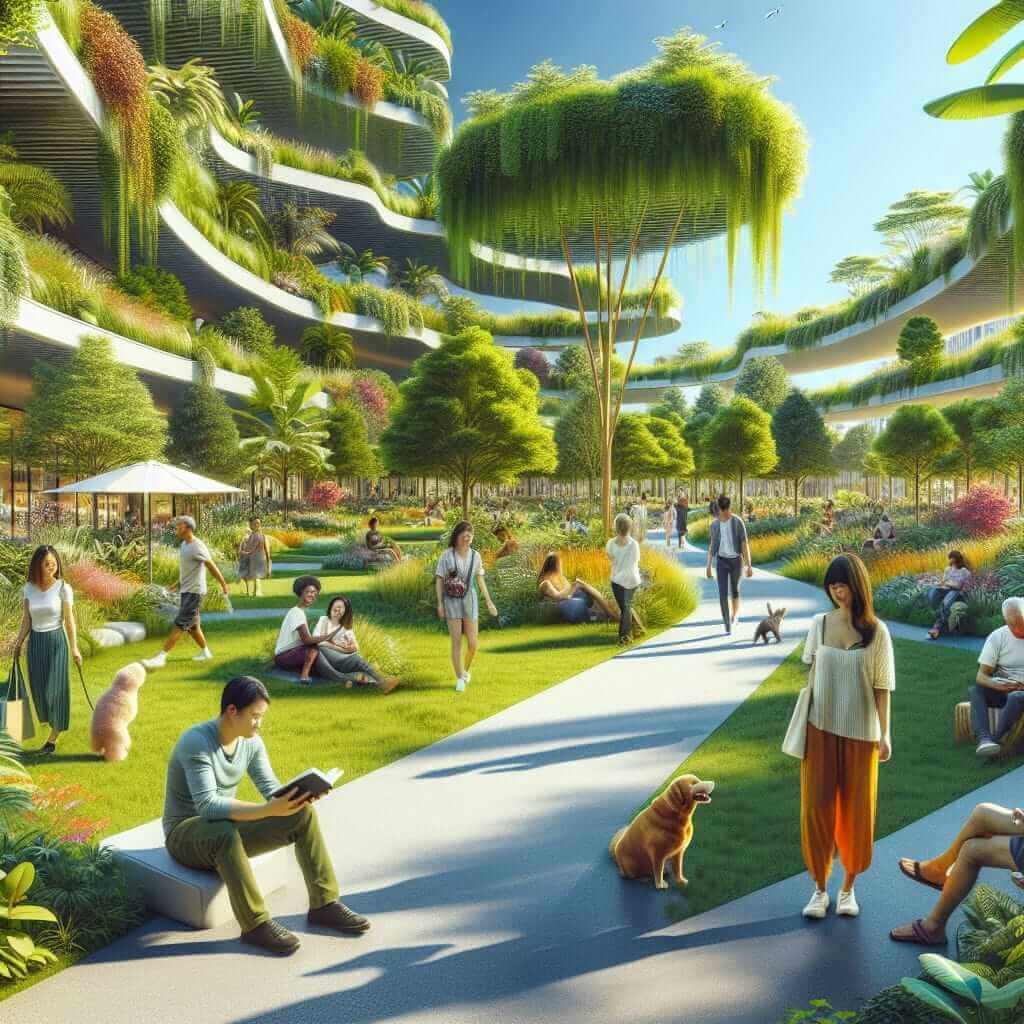The phrase “the influence of urban design on quality of life” is a common topic in IELTS Writing Task 2. This theme explores the interconnectedness of how we design our cities and the well-being of those who inhabit them. Let’s delve into some potential IELTS questions that may arise from this subject:
1. Direct Question:
Some people argue that the primary purpose of urban design should be to enhance the quality of life for residents. To what extent do you agree or disagree?
2. Comparative Question:
Many believe that incorporating more green spaces in urban design is crucial for improving citizens’ quality of life. Others, however, prioritize efficient transportation systems. Discuss both views and give your own opinion.
3. Problem & Solution Question:
With growing urban populations, cities are facing increasing challenges in maintaining a high quality of life for residents. What are some of the major problems associated with this trend, and what solutions can you suggest?
Sample IELTS Essay: Green Spaces and Quality of Life
Let’s craft a sample essay responding to the second question above:
Incorporating Green Spaces vs. Efficient Transportation
Question: Many believe that incorporating more green spaces in urban design is crucial for improving citizens’ quality of life. Others, however, prioritize efficient transportation systems. Discuss both views and give your own opinion.
Answer:
The relationship between urban design and quality of life is multifaceted, with green spaces and efficient transportation systems representing two key factors in this equation. While some advocate for prioritizing green spaces to enhance well-being, others emphasize the importance of seamless transportation networks. This essay will delve into both perspectives before presenting my own viewpoint.
Proponents of abundant green spaces argue that such areas offer numerous benefits for residents’ mental and physical health. Parks, gardens, and tree-lined streets provide opportunities for relaxation, exercise, and social interaction – all vital for stress reduction and overall well-being. Furthermore, greenery improves air quality, reduces noise pollution, and mitigates the urban heat island effect, creating a healthier and more pleasant environment.
Conversely, those prioritizing efficient transportation systems underscore their role in improving accessibility, reducing commute times, and boosting economic productivity. A well-connected city with reliable public transport options allows citizens to reach their destinations quickly and conveniently, leading to more time for leisure, work, or personal pursuits. This efficiency translates into economic benefits as well, fostering business growth and employment opportunities.
While both sides present valid arguments, I believe a balanced approach is essential. Urban design should aim to seamlessly integrate green spaces with efficient transportation networks. For instance, cities can prioritize pedestrian-friendly streets and cycle paths alongside public transport corridors, creating a network that encourages physical activity and reduces reliance on private vehicles. This integrated approach can foster a healthier, more sustainable, and ultimately higher quality of life for urban dwellers.
Word Count: 275 words

Writing Tips and Vocabulary
Key Points to Remember:
- Clear Structure: Follow a logical structure with an introduction, body paragraphs discussing both viewpoints, and a conclusion stating your opinion.
- Developed Ideas: Provide clear explanations and support your arguments with relevant examples.
- Cohesive Devices: Use linking words and phrases to ensure a smooth flow of ideas.
- Formal Language: Maintain a formal tone throughout your essay, avoiding contractions and colloquialisms.
Vocabulary Enhancement:
Here are some useful words and phrases related to this topic:
- Urban Sprawl (n.) /ˈɜːrbən sprɔːl/: The uncontrolled expansion of urban areas into surrounding rural land.
- Sustainable Development (n.) /səˈsteɪnəbl dɪˈvɛləpmənt/: Development that meets the needs of the present without compromising the ability of future generations to meet their own needs.
- Infrastructure (n.) /ˈɪnfrəˌstrʌktʃər/: The basic physical and organizational structures and facilities (e.g., buildings, roads, power supplies) needed for the operation of a society or enterprise.
- Pedestrian-Friendly (adj.) /pəˈdɛstriən ˈfrɛndli/: Designed to be easy and safe for people to walk in.
- Congestion (n.) /kənˈdʒɛstʃən/: The state of being overcrowded, especially with traffic.
- Green Belt (n.) /ɡriːn bɛlt/: An area of open land around a city, on which building is restricted.
- Revitalization (n.) /riːˌvaɪtəlaɪˈzeɪʃən/: The process of making something stronger, healthier, or more active.
- Amenities (n.) /əˈmiːnətiz/: Desirable or useful features of a place.
- Socioeconomic (adj.) /ˌsoʊsiːoʊˌɛkəˈnɒmɪk/: Relating to or concerned with the interaction of social and economic factors.
- Urban Planning (n.) /ˈɜːrbən ˈplænɪŋ/: The technical and political process concerned with the development and design of land use and the built environment.
Conclusion
Mastering the vocabulary and concepts surrounding urban design is key to excelling in IELTS Writing Task 2. Remember to analyze the question carefully, structure your essay logically, and support your ideas with relevant examples. For further practice, consider exploring related topics like the impact of urban planning on community development (link to https://www.ielts.net/81-the-impact-of-urban-planning-on-community-development/ ) or the influence of historical preservation on urban development (link to https://www.ielts.net/66-the-influence-of-historical-preservation-on-urban-development/ ). With diligent practice and a keen understanding of the issues, you can confidently tackle any IELTS question on this subject.